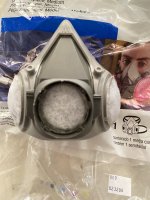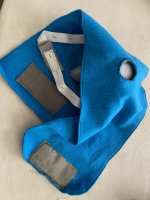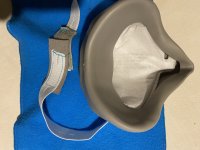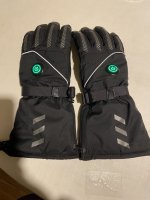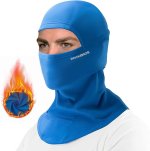I think for most people heated pants and vest shouldn't be needed and cost more and be more complex than good gear, I mean snowmobilers ride around in any temperature you could imagine at higher speeds often with much less physical activity.
That being said I have tried various different heated clothing bits and many seem to have issues. Anything that moves too much is prone to breaking, better quality less so but perhaps not that much less so. If you're going to be running a buck converter to lower the voltage anyway and want something cheaper I have made some heated clothing before and they seem to be more durable than at least the cheap stuff and pretty easy to increase that more. Reason being the resistive wire or carbon tape used in many of these is pretty fragile. If you use a lot more wire and a lower voltage you can use much thicker and more durable wire. I've used 40ga teflon and 28ga silicone in the past. The fine teflon is so thin you can use a large needle to weave it in but durability wise a larger gauge of high strand count silicone and a 5v or less power supply would be ideal. Also the silicone wire has a bonus that if you need to find a break and repair it at some point you can use needle multimeter probes to peirce the insulating and find the fault, can't really do that with harder insulation materials.
I've also noticed many of the cheaper heated devices have terrible distribution and all the pictures in the listings are lying. Another possible advantage to DIY options. I've found that the best directed heating devices provide a very low level of heater to the largest possible area, small heating areas only work if you don't need that much heat which may be the case if you have good insulation and wind protection which should come first anyway. At this point I'm more aiming for being able to add heat to hands and feet for a short amount of time, once you get them warmed up and the blood flowing they'll stay warm assuming your core is warm which is much easier to do with decent gear and trivial if you're exercising at all.
That being said I have tried various different heated clothing bits and many seem to have issues. Anything that moves too much is prone to breaking, better quality less so but perhaps not that much less so. If you're going to be running a buck converter to lower the voltage anyway and want something cheaper I have made some heated clothing before and they seem to be more durable than at least the cheap stuff and pretty easy to increase that more. Reason being the resistive wire or carbon tape used in many of these is pretty fragile. If you use a lot more wire and a lower voltage you can use much thicker and more durable wire. I've used 40ga teflon and 28ga silicone in the past. The fine teflon is so thin you can use a large needle to weave it in but durability wise a larger gauge of high strand count silicone and a 5v or less power supply would be ideal. Also the silicone wire has a bonus that if you need to find a break and repair it at some point you can use needle multimeter probes to peirce the insulating and find the fault, can't really do that with harder insulation materials.
I've also noticed many of the cheaper heated devices have terrible distribution and all the pictures in the listings are lying. Another possible advantage to DIY options. I've found that the best directed heating devices provide a very low level of heater to the largest possible area, small heating areas only work if you don't need that much heat which may be the case if you have good insulation and wind protection which should come first anyway. At this point I'm more aiming for being able to add heat to hands and feet for a short amount of time, once you get them warmed up and the blood flowing they'll stay warm assuming your core is warm which is much easier to do with decent gear and trivial if you're exercising at all.


